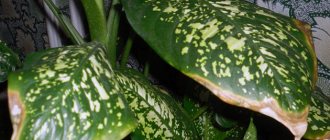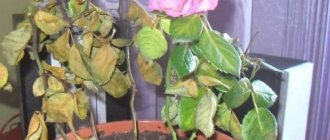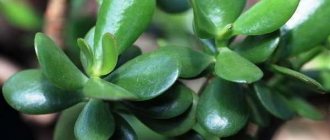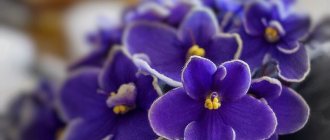Indoor geranium, or pelargonium, is a very unpretentious plant. It is undemanding in terms of temperature, watering and lighting, and often survives in conditions where other plants slowly die. However, getting pelargonium to bloom can sometimes be difficult.
For many, even inexperienced, gardeners, geranium blooms annually, profusely and for a long time. But this plant does not please other owners with flowers. Geraniums can grow for many years and have beautiful foliage, but not bloom. There are several reasons for this: an incorrectly selected pot, diseases of the root system, pests, lack of a rest period and incorrect watering regime.
You can read more about caring for geraniums here. Now let’s take a closer look at why geraniums don’t bloom, what to do about it, and how to make a houseplant bloom.
All the reasons why geraniums don't bloom
The most common mistake in caring for geraniums is the lack of a rest period. In a city apartment where pelargonium grows, it is not easy to find a cool place for the flower to overwinter. Therefore, most often the plant is left on the windowsill for the winter.
Here the temperature is not lower than 20ºС, which is not enough for wintering. Geranium continues to grow and does not rest before the spring growing season and flowering. As a result, the shoots grown in winter turn out to be thin and weak, and buds do not form on them.
Also
quite often there is improper watering of the plant , lack of fertilizing and regular replanting.
Inexperienced gardeners flood the plant or, on the contrary, being afraid to flood it, they dry out the earthen ball too much. In such conditions, geranium spends all its energy on survival, and there is no longer any left for flowering.
At the same time, its lower leaves turn yellow and dry out, leaving only young leaf blades on the tops of the stems.
Also, if improperly watered, the roots usually rot. At the same time, you should not wait for flowering - you need to save the plant.
Flowering directly depends on feeding and replanting pelargonium . When grown in depleted soil, the flower will not set buds. If there is a lack of nutrition, it slows down, loses leaves and never blooms.
The size of the pot greatly influences the timing of bud formation. In large pots, pelargonium blooms only in mid-summer. It also develops when cuttings are planted in open ground in the spring.
Pelargonium is undemanding to ambient temperature. Only too low temperatures can harm the plant. The flower should not be placed under air conditioning or in places with cold drafts. Here he can drop all the grown buds.
Geranium very rarely refuses to bloom when there is too little or too much light . Under optimal growing conditions, it blooms even in partial shade or when direct sunlight hits its leaves. It is also extremely rare that it lacks flowers due to pest damage. Harmful insects do not often settle on pelargonium.
In what cases will flowers be lost completely or partially?
Frostbite
Hypothermia or frostbite of a flowering orchid will immediately affect not only the loss of color, but can even destroy the plant if the degree of frostbite in the root system is high enough.
The most common causes of hypothermia are:
- transportation of orchids in the winter season;
- incorrectly selected temperature mode;
- a flow of cold air caused by ventilation of the room during the cold season.
The result of damage depends on the degree, time and areas of cooling.
Natural aging
The duration of flowering depends on:
- varieties of orchids;
- general condition;
- number of peduncles and flowers;
- growing and care conditions;
- age.
Depending on the species and selection, orchids can bloom from a week to six months, or even more, with proper care. Therefore, when purchasing a new flowering orhu at a flower center or store, it is difficult to determine the duration of its flowering.
Usually, the sudden fall of flowers with a healthy plant and proper care can only mean the natural process of the end of flowering.
The age-related decline of flowers in most home orchids occurs after 5-7 years, although in natural conditions they bloom much longer. But indoor growing conditions and “excessive” or improper care significantly reduce the active life span of orchids.
Attention! During natural aging, flowers fall off from bottom to top, and during diseases and other unacceptable processes - from any place or all at once.
Root death
Damage to the root part is the main care mistake for beginners. Common care mistakes that lead to damage to the root system, which subsequently affects the loss of flowers, buds, and sometimes even the development of the plant:
- overflow;
- underfilled;
- incorrectly selected temperature conditions;
- poor water quality;
- inadequate feeding.
Poor quality irrigation water is one of the reasons for the falling of flowers and buds.
Moreover, partial falling does not occur. Lack of nutrition and moisture affects the entire plant when the root part dies.
Changing the conditions of detention
Changing the growing environment causes a stressful situation, which naturally affects the flowering phase. Adaptation to new conditions is painful, as a result of which the flowers wither and fall off. The buds eventually do not bloom, but fall off.
Diseases of geranium roots
Geranium is susceptible to fungal and bacterial infections of the root system.
These diseases are not immediately noticeable. Often the flower looks healthy for some time, but its growth slows down and buds do not form. Then, if no measures are taken, the plant quickly dies.
Most often, the roots of a plant become sick due to the abundance of moisture in the soil or high air humidity . Under no circumstances should the plant be flooded.
Water the geranium only when the top layer of soil in the pot dries out. The room where pelargonium grows must be regularly ventilated. If moisture stagnates in the soil, you need to check the drainage layer and replace it if it is clogged.
Selection of capacity
When choosing a pot for an orchid, you must follow a number of important rules and principles. Firstly, it must provide ventilation for the root system. Therefore, it is best to purchase a specialized container for orchids, which has small holes. Thanks to them, complete drainage of water from the rhizome is ensured.
Secondly, the pot must provide the flower with sufficient lighting. The best option would be a completely transparent copy.
Thirdly, the material from which the pot is made should not be heated or cooled. The ideal option in this case is plastic. The size of the pot is no less important; it should not be too loose.
Experienced gardeners use ceramic containers in their arsenal. Their main advantage is high air and moisture permeability and protection of the rhizome from overheating. However, a ceramic pot has an extremely unpleasant drawback - the roots of plants stick to the inner wall during long-term use, which can result in injury to the flower during replanting.
A glass pot is a very good option that provides the plant with the necessary amount of light. A significant drawback is the lack of drainage holes. Such products are not suitable for ordinary people, since you need to know the exact amount of water required for irrigation. And this task is only feasible for professionals.
Pest infestation
Pests that feed on plant sap often attack pelargonium. Those flowers that are taken out into the open air in summer are especially affected.
Harmful insects primarily attack young shoots and buds. In this case, the plant loses its decorative appearance, its leaves turn yellow and its buds fall off.
A plant affected by pests will not bloom. To wait for flowering, you need to treat the bush with insecticidal preparations, and then repeat the treatment until the insects are completely destroyed.
Ethylene and its effect on flowering
You can imagine the following picture: autumn, on the bedside table not far from the window there is a blooming beauty, next to it is a vase of fruit.
Beautiful? Only such beauty will not last long, as the orchid will begin to dry out the flowers and buds. Why? Flowering plants should not be placed near:
- Apples;
- Grush;
- Bananas;
- And other vegetables and fruits.
Since the latter emit ethylene. Ethylene is a gas that is produced in some plants and fruits under the influence of the amino acid methionine.
Physiologists believe that ethylene is a plant aging hormone. To prevent fruits from spoiling quickly, varieties are developed in which ethylene synthesis is impaired. And then it is used for faster ripening of fruits.
Also, orchids should not be placed close to cut flowers, such as:
- Dahlias;
- Irises;
- Carnations;
- Chrysanthemums;
- Gladioli;
- Roses;
- Asters.
Plants such as:
- Begonias;
- Fuchsia;
- Primrose;
- Geranium;
- Or pine needles.
The orchid dries out the buds when in contact with the above listed plants, fruits and vegetables.
No rest period
To successfully set buds in spring, geraniums must be kept at low temperatures in winter.
During the dormant period, it rests and practically does not grow - this mode is natural for the plant. With the onset of warmth, its intensive growth begins, and then buds and flowers appear.
If geranium is kept at room temperature in winter, it continues to grow during this period as intensively as in summer. She does not get rest before the spring growing season, so she does not have enough strength to bloom.
In winter, geraniums often lack light, so the shoots become very elongated and weaken . There are usually no buds on thin stems. Only if the plant is properly maintained in winter can you admire its abundant and long-lasting flowering.
Why doesn't geranium bloom in winter - because the plant has a dormant period.
Improper watering and irregular feeding
Abundant and frequent watering will inevitably lead to rotting of the roots and death of the plant. In this mode, it does not bloom, but slowly dies. But very little watering will also not ensure its flowering.
Lack of moisture affects its appearance: the leaves wither, turn yellow and fall off, the stems become bare.
These are too harsh conditions for the development of pelargonium. It can survive for some time with a lack of water, but will not bloom. In order for geraniums to form buds, they need to be watered moderately and regularly .
The soil in the pot should always remain moist. Drying out the earth clod leads to drying out of the roots and death of the plant. But you need to make sure that the water does not stagnate in the pot. This can happen due to poor drainage or if the roots have grown and blocked the drainage hole. Annual replanting with root pruning will help avoid this.
Don't forget about feeding geraniums . During the growing season and flowering, the plant consumes a lot of nutrients and the soil in the pot is quickly depleted. Therefore, it is necessary to feed geraniums with complex mineral fertilizers in the spring and summer.
Fertilizing is carried out every 2 weeks during the growing season and flowering. Fertilizers are applied only to moist soil.
By following these simple rules for caring for indoor geraniums, it is easy to achieve abundant annual flowering. Healthy plants bloom from early spring to late summer, and sometimes until mid-autumn.
Prevention at home
Prevention will help prevent not only the appearance of yellow dry leaves, but also many other problems . In order for the plant to feel good, develop quickly and delight you with spectacular inflorescences every year, you must adhere to simple rules:
- Do not place the pot in places with insufficient lighting, on a cold windowsill, or near a radiator or TV.
- Disinfect the ground. Before planting (transplanting), you need to warm the soil in the oven or treat it with potassium permanganate.
- Keep the flower clean. We must remember to remove dust from the leaves and cut off dried stems and flowers.
- As it grows, transplant the plant into a larger pot - it will be grateful for it.
- If the air in the room is too dry, then you need to place a container with cool water near the geranium.
As can be seen from the above, preventing the appearance of dry leaves is simple. You need to follow the given tips and they will never appear.
Other reasons
Now let's look at other reasons why geraniums don't bloom.
Lighting
Geranium grows and blooms best in diffused light. In direct sunlight, burns may form on its leaves, and the resulting buds dry out and fall off.
Pelargonium should not be kept in partial shade or shade . Lack of lighting also greatly affects the flowering regime. Under these conditions, bud formation occurs much later, and sometimes pelargonium does not bloom at all.
Temperature
Geranium grows in a wide temperature range, but the optimal temperature for its growth and flowering is a room temperature of 20-25ºC. At low temperatures in summer, the onset of flowering may be delayed. The plant also reacts to cold drafts.
In winter, during the dormant period, zonal pelargonium needs to maintain a temperature of 10-15ºC. In a warmer room it continues to grow and stretch out, which will certainly lead to poor flowering in spring and summer. But most hanging varieties cannot withstand temperatures below 12ºС.
Irregular pruning and plant age
To make geranium look like a lush bush and bloom profusely, it is necessary to carry out formative pruning.
Let's look at how to prune geraniums so that they bloom.
Usually in the spring, before the beginning of the growing season, the geranium bush is heavily pruned , shortening all long shoots by 2/3. This stimulates branching of the plant, and in the future buds are laid at the top of each new shoot.
Inexperienced gardeners often try unsuccessfully to get very old plants to bloom. We should not forget that pelargonium grows well and blooms profusely for no more than 4-5 years. After this, it is better to renew the plant by cutting and rooting the cuttings.
How to make geraniums bloom
Pelargonium owners often complain that their plants refuse to bloom. To identify an error in care, you must first inspect the flower. By its appearance, you can immediately determine the reason for the failure.
If the plant looks nice and green, with lots of leaves and shoots, then the reason for the lack of flowering is that the pot is too large or the soil is too nutritious.
At the same time, the bush increases its leaf mass, and flowering will have to wait a very long time. It is better to transplant the plant into a smaller pot, and for planting use soil with less humus.
The plant has very long and thin shoots. The reason for the lack of flowers is poor lighting . Pelargonium looks the same in the absence of a dormant period, if it was not pruned in the spring. It is necessary to prune the plant, removing the weakest shoots and shortening the rest by 2/3. After this, you need to move it to a more illuminated place.
The plant is losing leaves. The leaf blades dry along the edges, then turn yellow and fall off. Many “bald” shoots with leaves only at the tops. This is how pelargonium can react to lack of feeding and poor watering. It also looks like very old plants that need to be replaced with young specimens.
Now you know how to care for geraniums so that they bloom.











